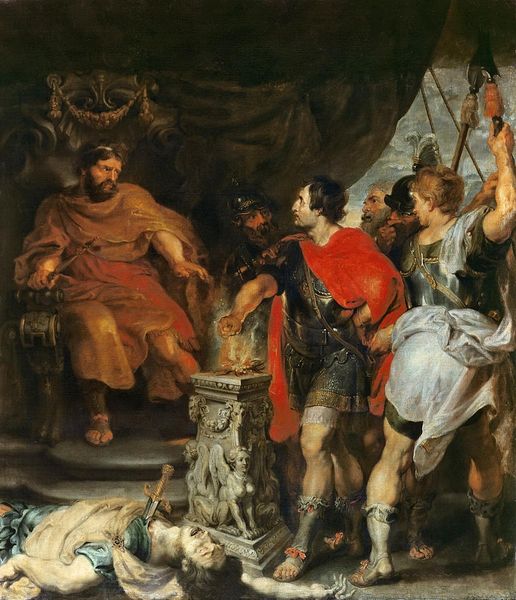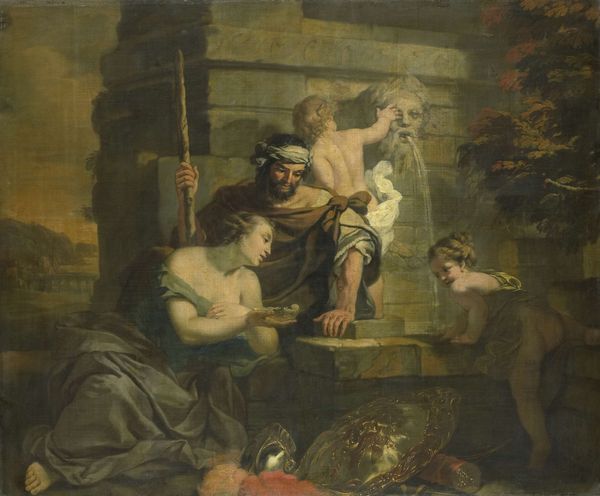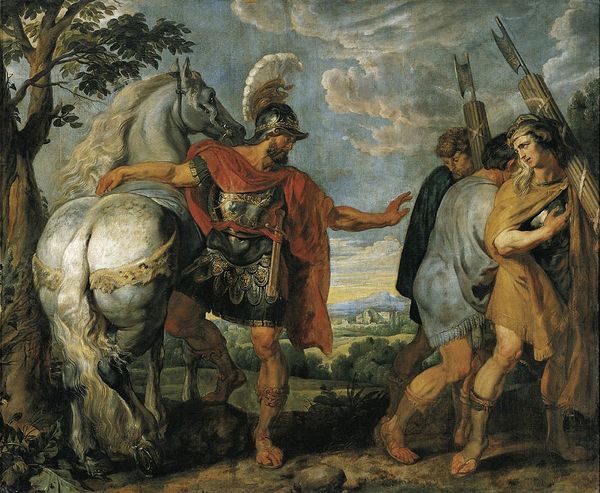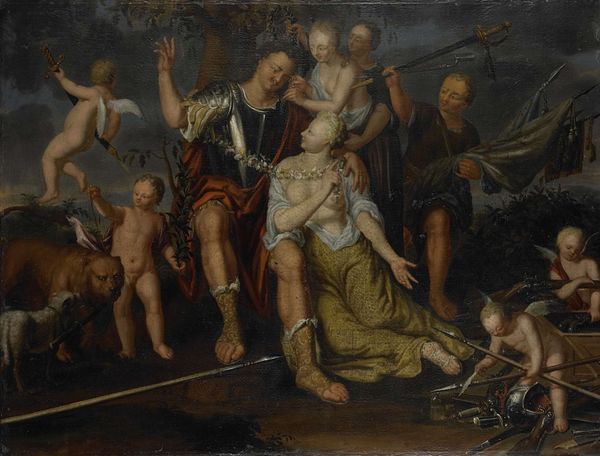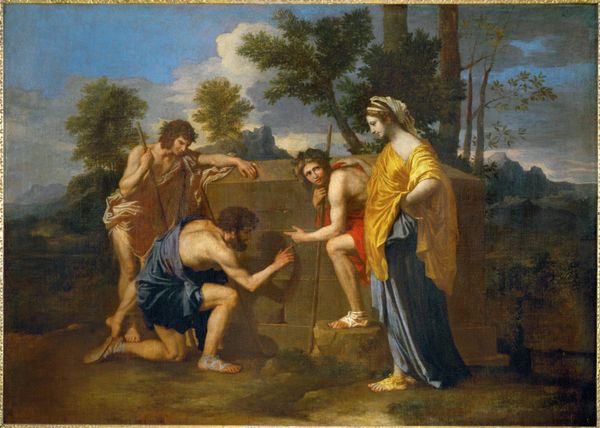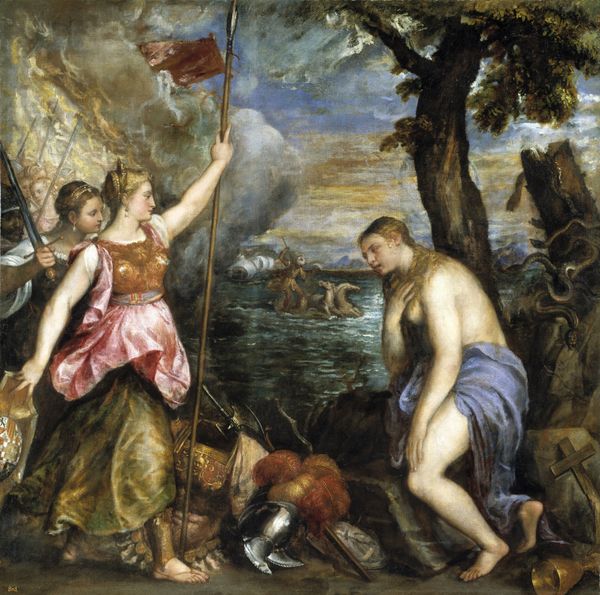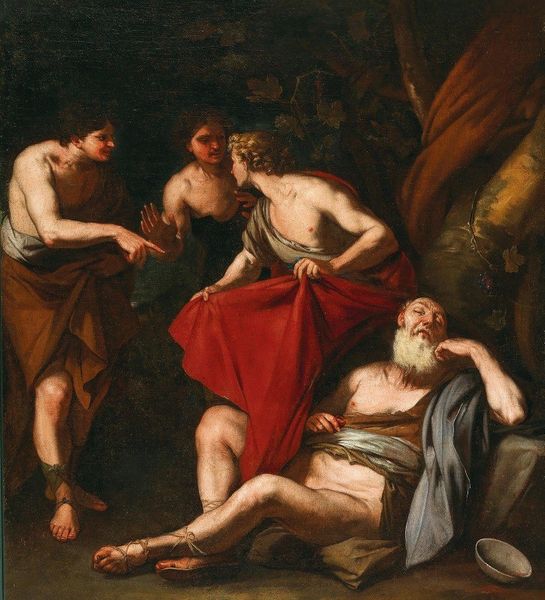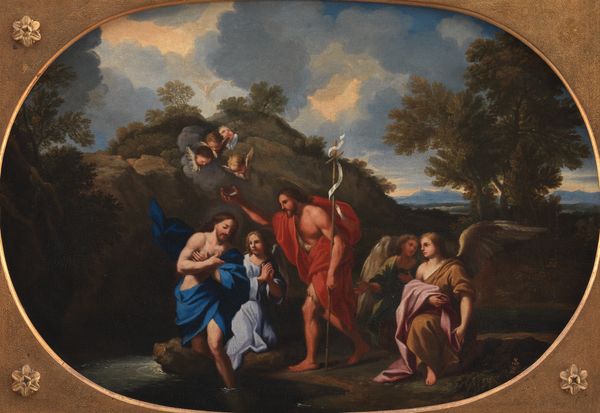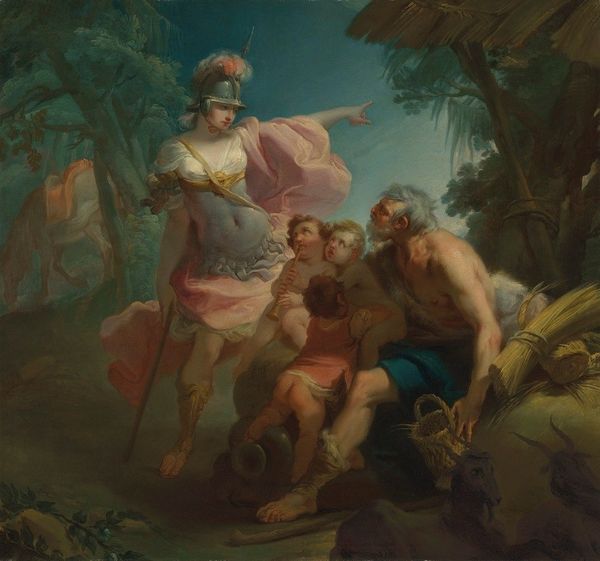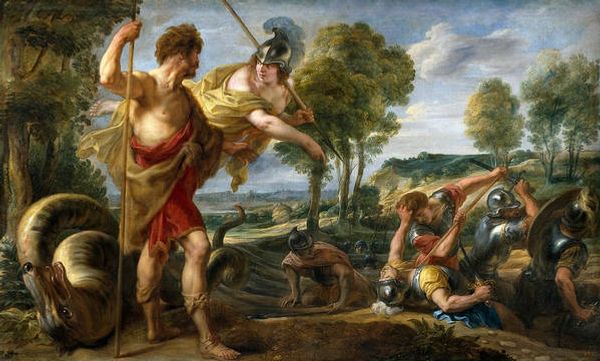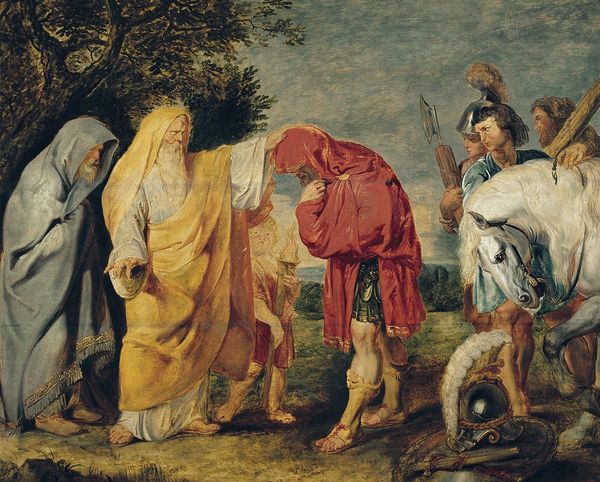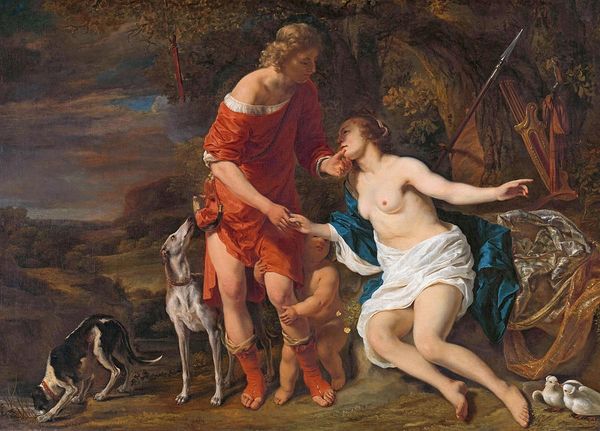
oil-paint
#
high-renaissance
#
venetian-painting
#
narrative-art
#
oil-paint
#
landscape
#
painted
#
figuration
#
oil painting
#
history-painting
Copyright: Public Domain: Artvee
Curator: Painted around 1580-1585 by Paolo Veronese, this piece is titled "Rebecca at the Well." It's an oil painting, typical of the High Renaissance style and very evocative of Venetian painting traditions. Editor: It's interesting how Veronese juxtaposes the elegance of Rebecca with what looks like really arduous labor. The guy on his knees fetching water has this really servile posture. Curator: That posture, the bent back, it reflects the socio-economic structures. Look closely, and you will find these types of images show the hierarchies in the labor of the Renaissance and in the everyday tasks being performed. Who had to work this way and how was the division of that labor decided? Editor: Absolutely. Rebecca isn't doing that labor herself. And notice the African servant? The clear visual cues denoting difference hint at the era’s complicated intersectional politics of race and class. What's also compelling to me is the way the biblical narrative acts as a cover for those social issues present during this era. It is a really striking reminder of who is seen, whose stories are valorized and whose stories become silent or erased. Curator: Exactly. Then you consider Veronese's production processes—the scale of the canvas, the labor that went into preparing it, grinding pigments, applying layers of oil, the involvement of workshop assistants—these are also really central to the work's meaning. Even the types of pigments used – where they were sourced, their cost. They become indices of Venice's wealth, and global trade during this era. Editor: And think about how the use of such precious materials contributes to Rebecca's portrayal. Her clothes are bright in opposition to her servant, she is set against a soft pastoral, there are buildings in the background implying a city. Her image then relies heavily on that economic imbalance, to appear as an individual worthy of desire. Even down to the softness and smoothness of her skin depicted in oils; her softness depends upon their labor and resources. Curator: Precisely. The level of finish becomes part of the artwork’s meaning, reflecting values of the patrons who were commissioning these works. In the way we look at the images of paintings and also considering where those precious resources and the hard labor come from. Editor: It shows how our understanding is improved by deconstructing the means of that production, doesn't it? What did you see in your new analysis?
Comments
No comments
Be the first to comment and join the conversation on the ultimate creative platform.

